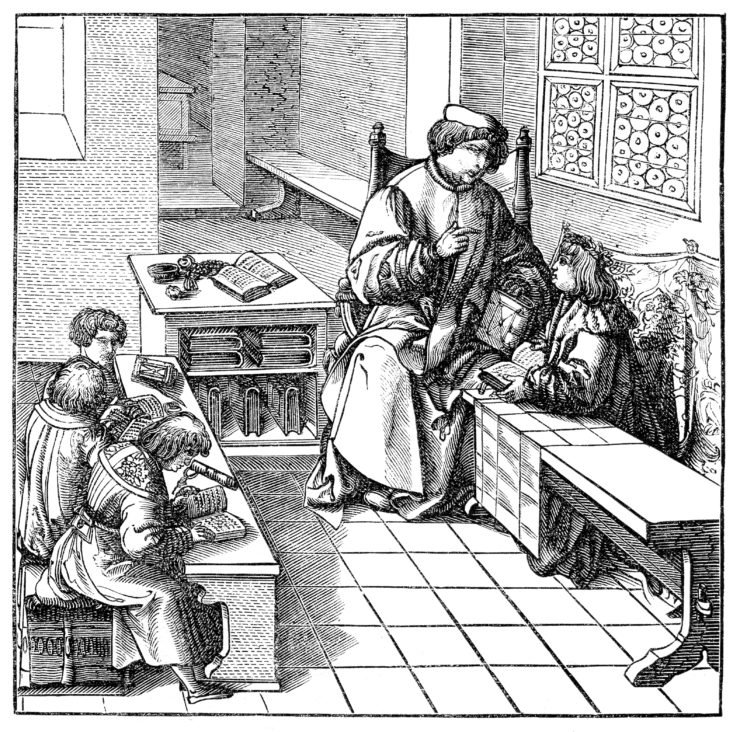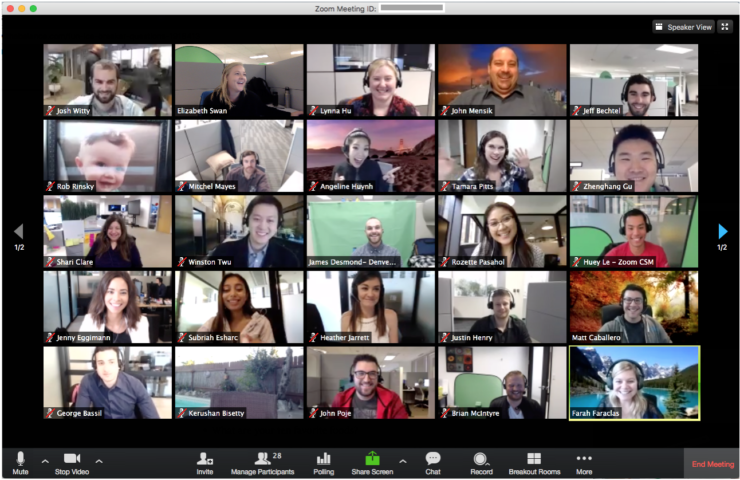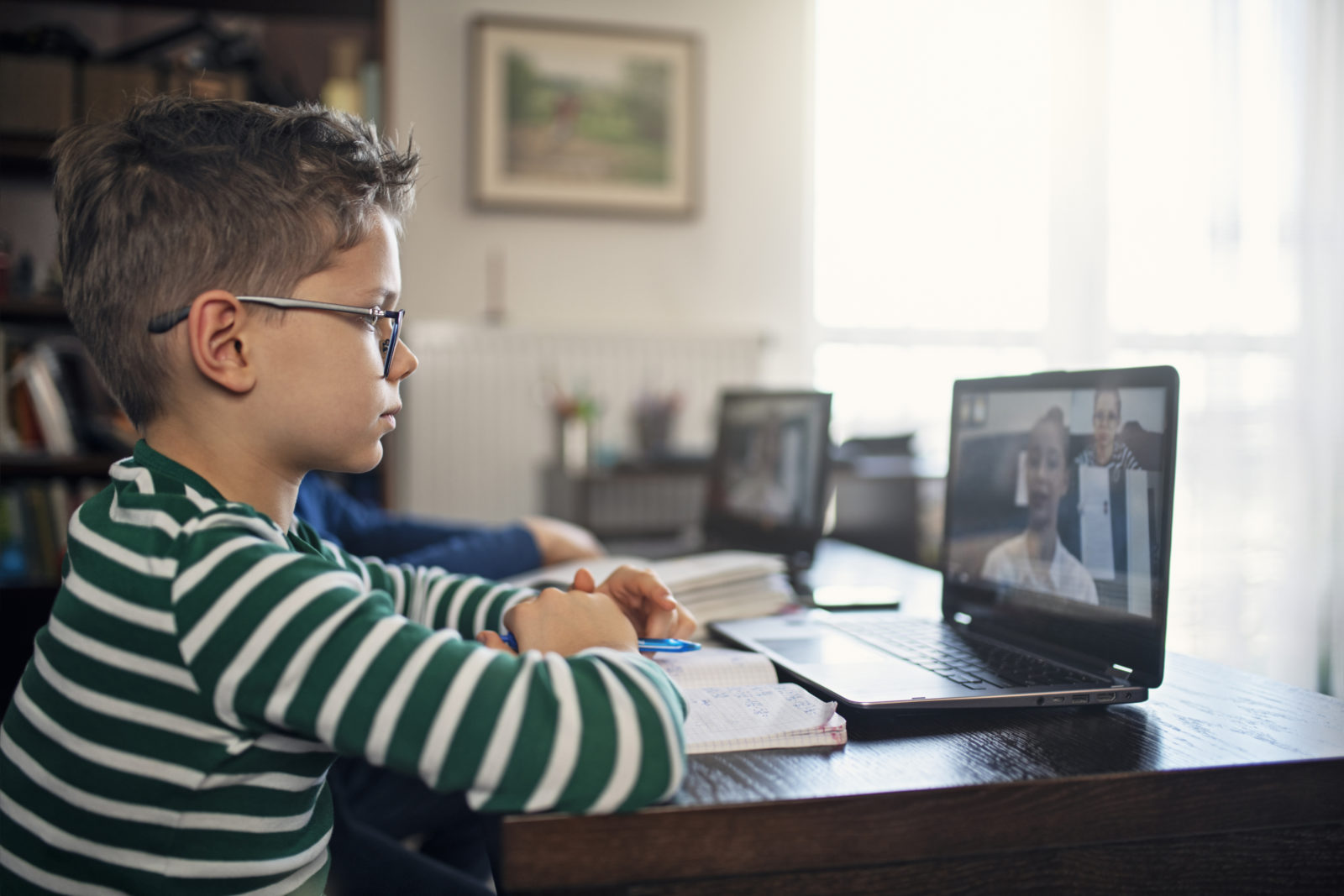Learning in Digital Worlds
The online classroom
Due to the COVID-19 pandemic, schools all over the world are increasingly shutting down and switching to online forms of learning. It is interesting to see that schools and teachers still try to maintain the idea of a classroom even when the physical classroom is gone or temporarily inaccessible. For instance, for some schools in Australia, where I currently live, it is absolutely natural that uniform standards are adhered to when students are logging into their virtual classroom at home. However, there is nothing natural about the idea of the classroom and how it is organized, as I will demonstrate below. Now that schools are forced to move their teaching online, I am curious to know if and how perceptions of the classroom (and teaching) will change in these unprecedented times.

According to French historian Ariès, the classroom as we know it originated in the 16h century, when an increasing demand for education required that classes where split up according to level and age group. Before that time, students of different age groups and levels were often mingled together, the more advanced students repeating the same curriculum all over again. In university towns like Paris (the early universities were arguably the actual predecessors of secondary education) students where often lodged in institutions and brought to a ‘master’ who was practicing his ‘craft’ in a rented establishment or even outside. This master welcomed everyone who wanted to learn from him, much like “a shopkeeper waits for customers”, as Ariès put it.
“Then the master waited for students to come in, as a shopkeeper waits for customers.”
Today we can witness how the classroom is being reorganized as we speak. Digital technology affords schools to transfer the classroom to students homes using video conference applications like Microsoft Teams and Zoom.

However, the classroom does not unproblematically transfer to digital space. I spoke to a teacher who found it depressing that he did not have real life interaction with students anymore. With another teacher I discussed the problem that normal measures of surveillance can no longer be maintained in an online classroom. The famous idea of Foucault’s panopticon prison (see image below) where the mere fact of being ‘seen’ regulates one’s behaviour, cannot easily be applied to the digital domain, which is often perceived as being opaque, intangible and anonymous (think of trolls and the Dark Web). In the ‘online classroom’ students have far more possibilities of escaping the teachers ‘gaze’, as this creative use of Zoom shows. The question remains if this game of hide-and-seek is still necessary, when students are forced to take more responsibility in organizing their learning. In fact, it might well be possible that the online classroom will generate a shift from a focus on monitoring student behaviour (is a student on-task?) to monitoring student production (has a student done their tasks?), because the latter is easier to check digitally and remotely.
Another question is if the role of the online teacher needs redefining in the online classroom. One teacher said to me that he was actually learning from his students when it comes to technology. This reminded me of the idea of distributed knowledge that some authors, like James Paul Gee, have used to describe learning in online environments (e.g. games and online forums). Knowledge does not have a central point, but is shared and expanded through a network: everybody contributes. The student-teacher relationship, however, can be considered unequal in a way that it might prevent such a distributed network to arise. Another form of teaching we can find online is the tutor-apprentice relationship. In online multiplayer role-playing games, for instance, more novice gamers learn from more experienced members of their guild. The difference here is that the apprentices are voluntary invested in their learning process, while students are often ‘forced’ to learn something.
We are so used to the idea of the classroom with a teacher ‘broadcasting’ that it is hard to imagine education in any other way. The current pandemic might offer new insights in what education should look like. Personally, I am keen to see what happens in the upcoming weeks or months; if the ‘traditional’ classroom will find a way to reinvent and manifest itself online or if new ways of pedagogy and learning are starting to develop.
I would love to hear stories and opinions of students and teachers who are currently in lock-down. What do you think of the online classroom? Does it help you to imagine new ways of teaching and/or learning?

Hi Peter,
Thank you for your question! That is indeed an interesting point you are making. I think we need to hear more stories from teachers and students in order to answer that. I would say that students have equally a lot of possibilities to distract each other online (e.g. using social media to secretly interact). However, this ‘illicit’ chitchat between students would be less visible or distracting to those students who are genuinely engaged in the learning process. The immediacy of the physical classroom, where you are more easily exposed to the behaviour of disruptive classmates is less salient online. However, I am sure there are plenty of ways to disrupt the online classroom. I once had students hack a Kahoot, I am sure students will find ways to hack Zoom or Microsoft Teams in similar ways. The question remains: is this still as much fun without physical classmates being around, without the real life audience?
One of the key justifications for teacher surveillance in the classroom is the idea that an individual’s disruptive/non-compliant behaviour impinges on the right of others to learn. Does that go away in an online environment?
Intetesting blog. Thanks.